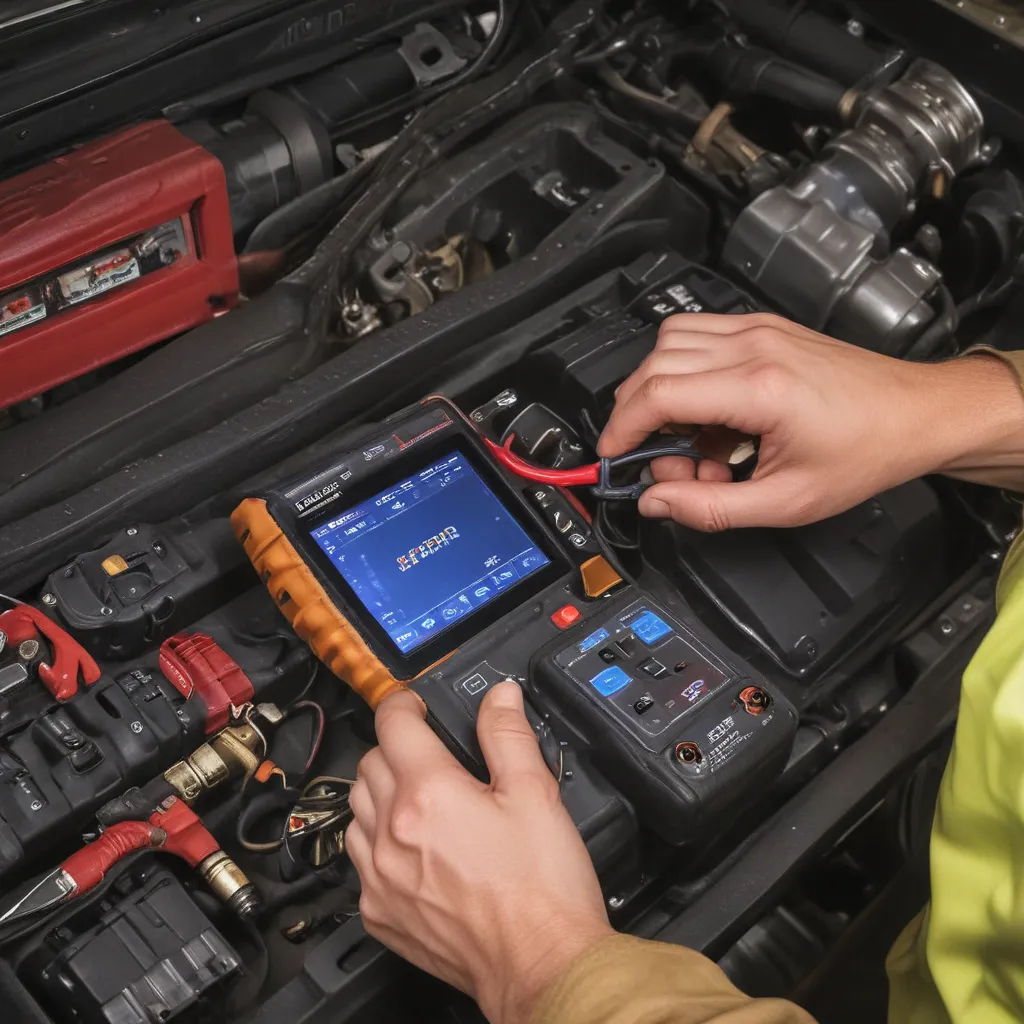
Understanding the Importance of Diagnostic Tools
As an RV and fleet vehicle repair expert in Orange County, California, I’ve seen my fair share of service light conundrums. These pesky little indicators can be the bane of any vehicle owner’s existence, flashing away, taunting us with their cryptic messages. But fear not, my friends! Today, I’m here to shed some light (pun intended) on the tools that can help us diagnose and reset those troublesome service lights.
Let’s start with a simple question: why are service lights so important, anyway? Well, think of them as the vehicle’s way of communicating with us, like a little dashboard-mounted translator. When that check engine light blinks on, it’s the car’s way of saying, “Hey, buddy, something’s not right. Can you take a look?” Ignoring those service lights can lead to bigger problems down the road, so it’s crucial to address them as soon as they appear.
Now, you might be wondering, “But how do I figure out what’s wrong?” That’s where diagnostic tools come in. These nifty gadgets can scan your vehicle’s onboard computer system, identifying the specific issue that’s causing the service light to illuminate. It’s like having a mechanic’s x-ray vision, allowing you to see beneath the surface and pinpoint the problem.
The Basics of Diagnostic Tools
One of the most common diagnostic tools is the humble OBD (On-Board Diagnostics) scanner. This little device plugs right into your vehicle’s OBD port, usually located under the dashboard, and communicates with the onboard computer to retrieve diagnostic trouble codes. These codes are like a secret language that your car uses to tell you what’s wrong, and the OBD scanner acts as the interpreter.
But the OBD scanner is just the tip of the diagnostic iceberg. There are also more advanced tools, like the professional-grade scan tools used by mechanics. These bad boys can delve even deeper into your vehicle’s systems, providing more detailed information and even allowing you to reset service lights and other indicators.
Now, I know what you’re thinking: “That all sounds great, but how do I use these tools?” Well, my friends, it’s actually pretty straightforward. Most OBD scanners come with user-friendly interfaces, often including smartphones or tablets that connect wirelessly to the device. Simply plug it in, follow the prompts, and boom! You’ve got a wealth of diagnostic information at your fingertips.
Troubleshooting with Diagnostic Tools
Of course, interpreting all that data can be a bit of a challenge. That’s where your trusty mechanic (or in this case, me) comes in. As an RV and fleet vehicle repair expert, I’ve seen just about every service light issue imaginable, and I know how to translate those cryptic trouble codes into actionable solutions.
Take, for example, the case of the flashing check engine light on my buddy’s old RV. He panicked, thinking it was going to cost him an arm and a leg to fix. But when he plugged in his OBD scanner, it revealed a simple issue with the oxygen sensor. A quick replacement, and the light was gone, and his wallet was none the lighter.
Or how about the time my fleet customer’s service light wouldn’t turn off, no matter what she tried? Turns out, the issue was with the fuel system, and a simple reset of the computer system did the trick. She was back on the road in no time, grateful for the diagnostic tools that helped solve the mystery.
Resetting Service Lights with Confidence
Speaking of resetting service lights, that’s another crucial skill to master. Sometimes, even after you’ve addressed the underlying issue, the pesky service light will still refuse to turn off. That’s where the reset function comes in handy.
Now, I know what you’re thinking: “But won’t that just be masking the problem?” And you’re right to be cautious. Resetting a service light without addressing the root cause is like putting a bandaid on a broken leg. It might make the problem disappear for a while, but it’s not a long-term solution.
That’s why it’s so important to use diagnostic tools in conjunction with your troubleshooting efforts. Once you’ve identified and fixed the issue, you can then use the reset function to turn off the service light and give your vehicle a clean slate. It’s like hitting the refresh button on your car’s dashboard, allowing you to start fresh and keep an eye out for any future issues.
The Future of Diagnostic Tools
As technology continues to evolve, the world of diagnostic tools is also seeing some exciting advancements. Imagine a future where your vehicle can communicate with your smartphone, giving you real-time updates on its health and performance. Or what about tools that can not only identify problems but also provide step-by-step instructions on how to fix them?
I’m personally excited to see what the future holds for diagnostic technology. Maybe one day, we’ll be able to diagnose and reset service lights with just a few taps on our phones, no matter where we are. The possibilities are endless, and I can’t wait to see how these tools continue to evolve and make our lives as vehicle owners and repair professionals even easier.
So, if you’re ever faced with a pesky service light, don’t panic. Remember, you’ve got a whole arsenal of diagnostic tools at your disposal, ready to help you uncover and solve the mystery. And when in doubt, don’t hesitate to reach out to your friendly neighborhood RV and fleet vehicle repair expert (that’s me!) for some guidance and support.
Now, if you’ll excuse me, I’ve got some service lights to reset and some happy customers to get back on the road. Happy driving, my friends!
